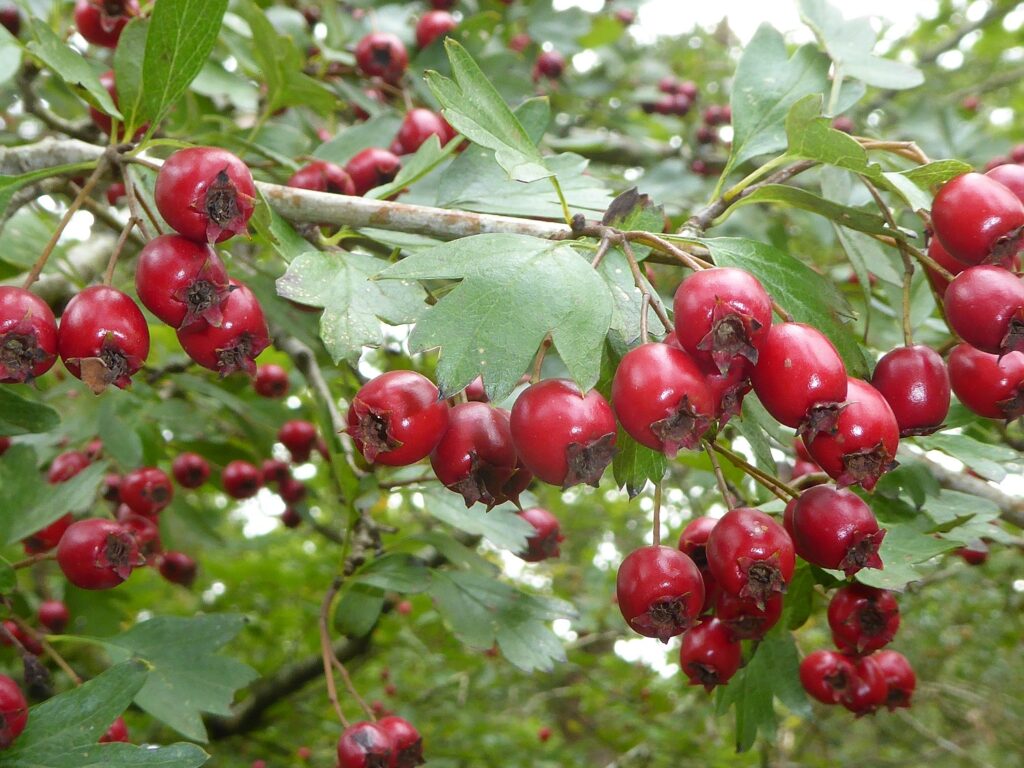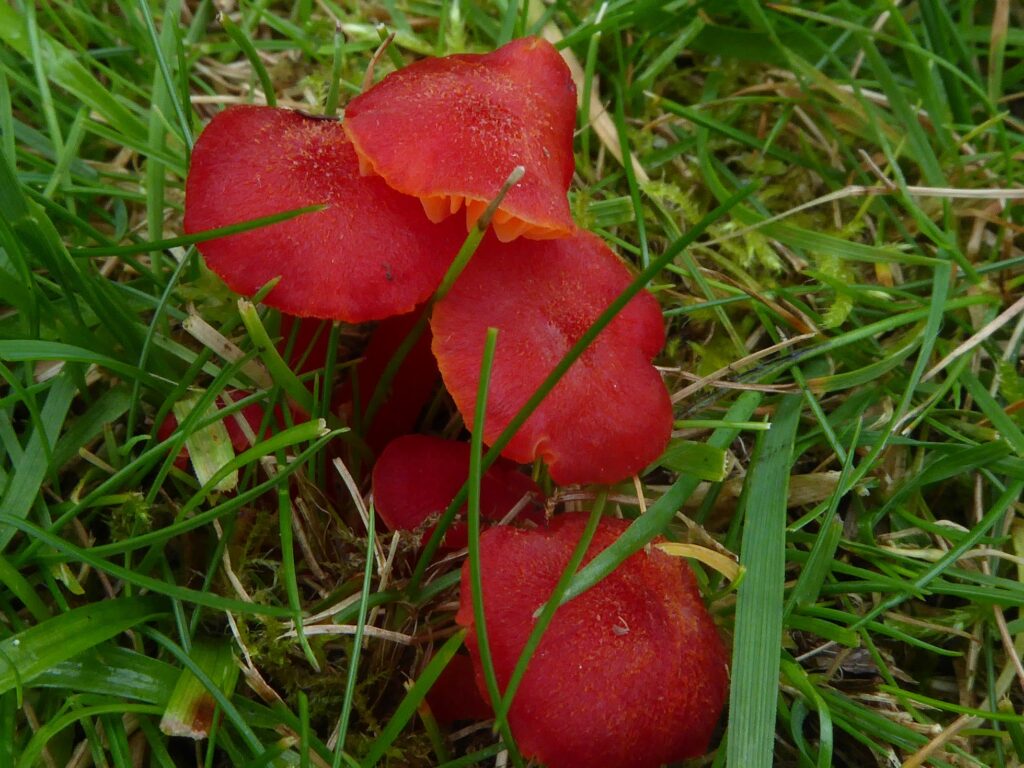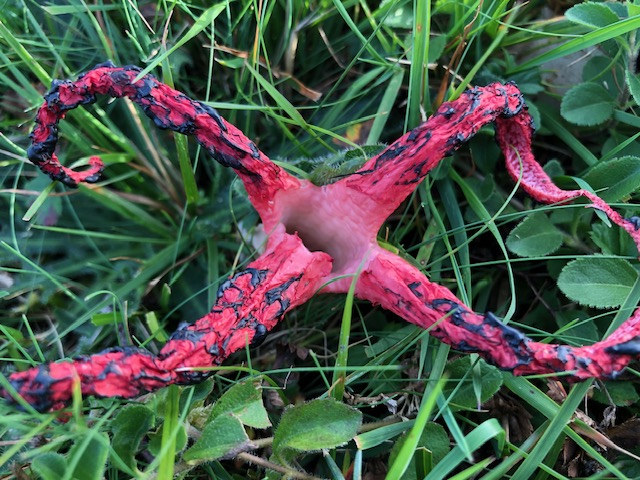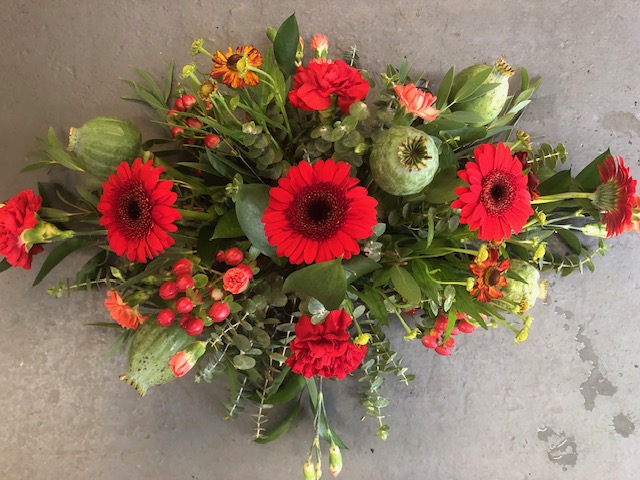
Autumn for me is a season of plenty when trees and hedgerows display the fullness of summer’s energy with an eye-catching colour explosion of berries and fruits. It’s a foraging treasure trove that reflects the health of nature and maybe, as some country lore suggests, a barometer to a harsh winter to come. However, I think the warm and rainy weather through the summer has more truth, and better explains this autumn’s abundance!
Interestingly, this term at the Academy of Floristry, I’ve been learning about colour harmonies and the importance of being colour aware in design work. This got me thinking about why the glossy dark green leaves and bright red berries of the holly are so striking and demand your attention. Direct harmony, also called complementary colours, is the pairing of two colours opposite each other on the colour wheel. This creates a high-contrast colour combo that’s bright and vivid.
The bright red and red-orange clusters of holly, hawthorn and rowan berries certainly stand out against their green backdrop, and this helps attract many bird species. Its nature’s clever strategy of rewarding birds with a vitamin and energy rich parcel of food in return for distributing its seed, hidden within the fleshy pith, in their droppings. Yew and rosehip berries are also high contrast easy- to-spot treats that provide an important source of food for birds in the winter.

I easily spotted these tiny but striking Scarlet Wapcaps on a grassy lawn in the New Forest. They literally ‘pop’ out at you against the cooler coloured green grass. Intriguingly, it’s not fully known why fungi are different colours. It is suggested that brightly coloured mushrooms attract spore dispersing insects, similarly to bright coloured berries attracting seed dispersing birds and mammals.

I was especially excited to happen across this fungus. It’s called Devil’s Fingers and is a rare stinkhorn species. Its tentacle-like bright red arms immediately grabbed my attention and its unpleasant smelling black slime (gleba) attracts insects to help spread its spores. The weirdest but fascinating fungus – a real Demogorgon Halloween shocker!
We often associate red as a warning colour – danger, fire, blood. Could the red pigments affect taste, helping the mushrooms avoid being eaten and survive to spread their spores? – I do like mysteries!
Colours are often associated with seasons, events, moods, countries, and landscapes. Red and green are favourite Christmas colours, so I enjoyed making this low table arrangement and thinking about the symbolism of these colours. In floral design this adds visual intrigue to designs – red colours are bold and dramatic – yet appear balanced with green. I’m certainly inspired by nature’s colour harmonies and I look forward to sharing more of my musings.

